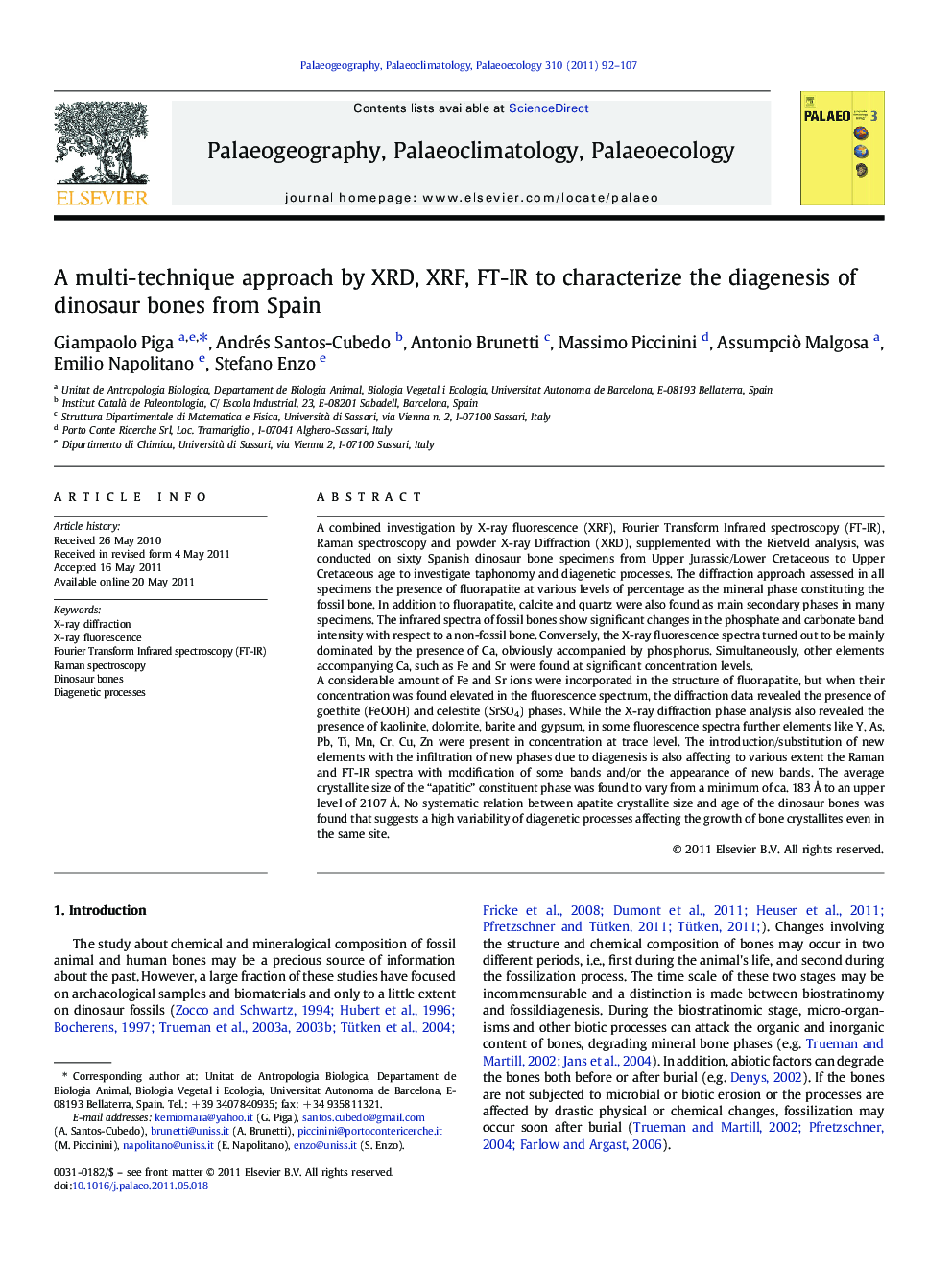| کد مقاله | کد نشریه | سال انتشار | مقاله انگلیسی | نسخه تمام متن |
|---|---|---|---|---|
| 4467158 | 1622248 | 2011 | 16 صفحه PDF | دانلود رایگان |

A combined investigation by X-ray fluorescence (XRF), Fourier Transform Infrared spectroscopy (FT-IR), Raman spectroscopy and powder X-ray Diffraction (XRD), supplemented with the Rietveld analysis, was conducted on sixty Spanish dinosaur bone specimens from Upper Jurassic/Lower Cretaceous to Upper Cretaceous age to investigate taphonomy and diagenetic processes. The diffraction approach assessed in all specimens the presence of fluorapatite at various levels of percentage as the mineral phase constituting the fossil bone. In addition to fluorapatite, calcite and quartz were also found as main secondary phases in many specimens. The infrared spectra of fossil bones show significant changes in the phosphate and carbonate band intensity with respect to a non-fossil bone. Conversely, the X-ray fluorescence spectra turned out to be mainly dominated by the presence of Ca, obviously accompanied by phosphorus. Simultaneously, other elements accompanying Ca, such as Fe and Sr were found at significant concentration levels.A considerable amount of Fe and Sr ions were incorporated in the structure of fluorapatite, but when their concentration was found elevated in the fluorescence spectrum, the diffraction data revealed the presence of goethite (FeOOH) and celestite (SrSO4) phases. While the X-ray diffraction phase analysis also revealed the presence of kaolinite, dolomite, barite and gypsum, in some fluorescence spectra further elements like Y, As, Pb, Ti, Mn, Cr, Cu, Zn were present in concentration at trace level. The introduction/substitution of new elements with the infiltration of new phases due to diagenesis is also affecting to various extent the Raman and FT-IR spectra with modification of some bands and/or the appearance of new bands. The average crystallite size of the “apatitic” constituent phase was found to vary from a minimum of ca. 183 Å to an upper level of 2107 Å. No systematic relation between apatite crystallite size and age of the dinosaur bones was found that suggests a high variability of diagenetic processes affecting the growth of bone crystallites even in the same site.
► We have used a multiple-technique approach to investigate a collection of Spanish dinosaur bone specimens to characterize the fossilization in terms of physico-chemical and mineralogical composition.
► The most frequent phases in the samples studied are mostly fluorapatite, quartz and calcite.
► The X-ray diffraction analysis also revealed the presence of kaolinite, dolomite, barite, celestite, gypsum an berlinite phases.
► The average crystallite size of the apatite-like phase varies unpredictably in the analysed specimens, inhibiting a correlation with fossil age.
Journal: Palaeogeography, Palaeoclimatology, Palaeoecology - Volume 310, Issues 1–2, 15 September 2011, Pages 92–107